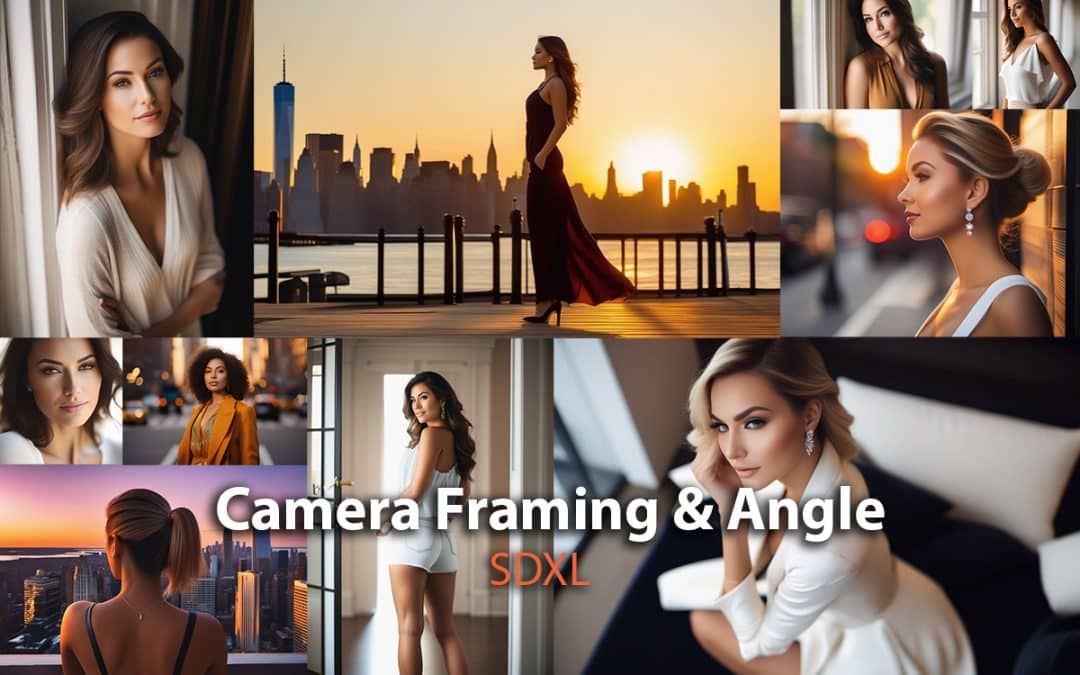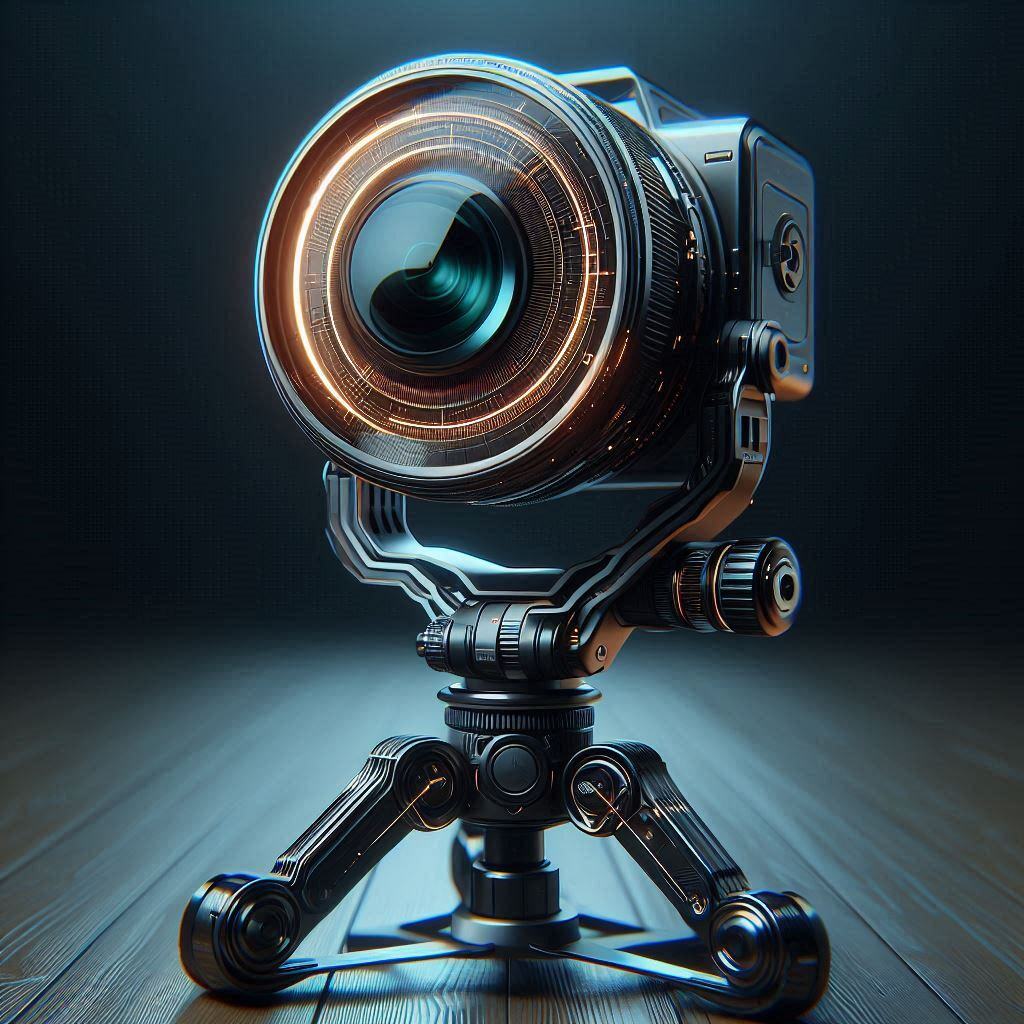Camera height significantly influences the perspective and impact of an AI-generated image. Lower heights create intimacy, while higher heights offer a broader view.
Choosing the right camera height is crucial for achieving the desired visual effect in AI image prompts. Lower camera heights often make the subject appear more imposing and intimate, drawing viewers into the scene. On the other hand, higher camera heights provide a more comprehensive view, adding context and depth to the image.
This technique is essential for creating engaging and relatable AI-generated visuals. By adjusting the camera height thoughtfully, creators can enhance the emotional and visual appeal of their images. Understanding this aspect can greatly improve the effectiveness and aesthetics of AI-driven content.
Understanding Camera Height
Camera height affects the way an image is perceived. The right camera height can transform an ordinary photo into an extraordinary one. Let’s explore what camera height means and its impact on composition.
Definition And Basics
Camera height refers to the distance between the camera lens and the ground. It is a crucial factor in photography and videography.
There are three basic camera heights:
- Eye level: The camera is at the same height as the subject’s eyes.
- High angle: The camera is positioned above the subject.
- Low angle: The camera is positioned below the subject.
Each height offers a different perspective and feel to the image.
Impact On Composition
Camera height plays a key role in composition. It changes how the subject and background relate to each other.
Eye level creates a neutral and balanced view. It is often used in portraits and interviews.
High angle makes the subject appear smaller and more vulnerable. It is effective in storytelling and dramatic scenes.
Low angle gives the subject a dominant and powerful look. It is great for action shots and heroic scenes.
The table below summarizes the impact of different camera heights:
| Camera Height | Effect on Subject | Common Uses |
|---|---|---|
| Eye level | Neutral, balanced | Portraits, interviews |
| High angle | Smaller, vulnerable | Storytelling, drama |
| Low angle | Dominant, powerful | Action, heroism |
Understanding these basics will improve your photography skills. You can experiment with different heights to find the best composition for each shot.
Ai In Photography
Artificial Intelligence has revolutionized the way we capture images. It enhances and simplifies the photography process. AI in photography means smarter cameras and better pictures for everyone.
How Ai Enhances Shots
AI can adjust the camera height for the best angle. It can detect faces and objects to focus on. AI helps in setting the best lighting for a shot. It also reduces blur by stabilizing the camera. AI can even suggest the best time to take a photo.
Here are some ways AI enhances shots:
- Auto-focus: AI detects and focuses on faces and objects.
- Lighting: AI adjusts lighting based on the environment.
- Stabilization: AI reduces blur by stabilizing the camera.
- Timing: AI suggests the best time to capture images.
Examples Of Ai Tools
There are many AI tools available to photographers. These tools make capturing the perfect shot easier.
| Tool | Feature |
|---|---|
| Adobe Photoshop | AI-powered editing and enhancements |
| Google Photos | AI for organizing and editing photos |
| Lightroom | AI for color correction and filters |
These tools use AI to help photographers in different ways. For example, Adobe Photoshop uses AI to enhance images automatically. Google Photos uses AI to organize and edit photos. Lightroom uses AI for color correction and applying filters.
Using these tools, photographers can take better pictures with less effort. AI makes photography more accessible and enjoyable for everyone.
Choosing The Right Camera Height
Choosing the right camera height is crucial for capturing stunning AI-generated images. A well-chosen height can transform a mundane scene into a masterpiece. Let’s explore how to select the optimal height for your AI image prompts.
Factors To Consider
Several factors influence the ideal camera height. The subject’s size, perspective, and background are key considerations.
- Subject’s Size: Larger subjects need a higher camera angle. Smaller subjects require a lower angle.
- Perspective: Different heights can create unique perspectives. Experiment to find what works best.
- Background: Ensure the background complements the subject. Adjust the height accordingly.
Common Mistakes
Many photographers make mistakes with camera height. Avoid these common pitfalls.
- Too High: Shooting from too high can flatten the image.
- Too Low: A very low angle might distort the subject.
- Ignoring Background: A poor background choice can ruin a great shot.
The table below summarizes the key points:
| Factor | Optimal Height | Common Mistake |
|---|---|---|
| Subject’s Size | Adjust height based on size | Incorrect height for size |
| Perspective | Experiment with different heights | Using the same height always |
| Background | Height should complement background | Ignoring background impact |
Choosing the right camera height enhances your AI image prompts significantly. Consider these factors and avoid common mistakes.

Ai Prompts For Optimal Height
Optimizing camera height using AI can transform your photo quality. AI tools provide smart suggestions to get the best shots. These prompts help maintain the right angle and perspective.
Using Ai Tools
AI tools offer precise height recommendations for cameras. They analyze the scene and suggest the best height. These tools use algorithms to determine the optimal position.
Here is a simple table to show the benefits:
| Feature | Benefit |
|---|---|
| Height Recommendations | Improves photo quality |
| Angle Analysis | Ensures proper perspective |
| Scene Analysis | Adapts to different environments |
Customizing Ai Suggestions
AI suggestions can be customized to fit your needs. You can adjust the height settings manually. This allows for more creative control. AI provides a good starting point, but you can tweak it.
Follow these steps to customize AI suggestions:
- Use the initial AI prompt as a guide.
- Adjust the camera height to match your vision.
- Test different heights to find the best angle.
Customizing ensures your photos are unique and well-composed. Combining AI prompts with personal tweaks delivers stunning results.
Practical Applications
The practical applications of AI image prompts can transform photography. Adjusting camera height helps capture the best angles and perspectives. Let’s explore how AI image prompts improve portrait and landscape photography.
Portrait Photography
In portrait photography, camera height is crucial. AI image prompts guide you to position the camera at the subject’s eye level. This creates a natural and engaging look. If the subject is a child, the AI suggests lowering the camera. For taller subjects, it advises raising it. This ensures the subject’s features are highlighted perfectly.
Consider the following benefits of using AI image prompts for portrait photography:
- Natural Eye Contact: Captures a direct and engaging gaze.
- Enhanced Symmetry: Aligns facial features for a balanced shot.
- Emotion Capture: Emphasizes the subject’s expressions effectively.
Landscape Photography
AI image prompts also revolutionize landscape photography. Camera height adjustments capture various elements of a scene. For sweeping landscapes, the AI suggests a high camera angle. This emphasizes the vastness and depth of the scene.
Conversely, for capturing detailed foregrounds, the AI recommends a lower height. This highlights textures and intricate details. Understanding these prompts enhances your landscape photography skills.
Key advantages of using AI image prompts in landscape photography include:
- Depth of Field: Achieves a sense of scale and distance.
- Foreground Detail: Highlights textures and elements in the foreground.
- Balanced Composition: Ensures all elements are well-proportioned.
Overall, AI image prompts for camera height greatly enhance photography. Whether capturing portraits or landscapes, these prompts ensure you achieve the best results.

Case Studies
Understanding the impact of camera height on AI image prompts can be insightful. This section explores real-world examples. These case studies show how different camera heights influence the final images.
Professional Photography
Professional photographers often use AI to enhance their images. Let’s see how camera height affects their work:
| Scenario | Camera Height | Result |
|---|---|---|
| Portrait Photography | Eye Level | Natural and engaging |
| Landscape Photography | Low Angle | Dramatic and expansive |
| Product Photography | High Angle | Clear and detailed |
Professional photographers often prefer eye-level shots for portraits. These shots create a natural connection. For landscapes, a low angle can add drama. This makes the scene look grand. Product photography benefits from a high angle. This gives a clear and detailed view of the product.
Amateur Enthusiasts
Amateur photographers also experiment with AI and camera heights. Here are some examples:
- Family Photos: A mid-level height captures everyone equally.
- Pet Photos: A low angle makes pets look heroic and cute.
- Travel Shots: A high angle shows more of the surroundings.
Amateurs often use a mid-level height for family photos. This ensures everyone is included. Pet photos taken from a low angle make the pets look larger than life. Travel shots benefit from a high angle. This shows more of the background and scenery.
These case studies reveal the importance of camera height. Both professionals and amateurs can achieve better results by adjusting their camera height.
Future Of Ai In Photography
The future of AI in photography is exciting and full of potential. AI is changing how we capture and edit photos. From AI image prompts to camera height adjustments, technology is evolving rapidly. Let’s explore the emerging trends and potential innovations in this field.
Emerging Trends
AI is making photography more accessible and creative. Here are some emerging trends:
- AI Image Prompts: AI suggests the best angles and compositions.
- Smart Filters: Filters that adapt to the scene and lighting.
- Real-time Editing: Instant edits while capturing photos.
- Object Recognition: Cameras that identify objects and people.
- Enhanced Resolution: AI improves photo clarity and detail.
Potential Innovations
The potential innovations in AI photography are vast. Here are some possibilities:
- Personalized Camera Settings: AI learns user preferences for custom settings.
- Dynamic Camera Height Adjustment: AI adjusts camera height for the best shot.
- Virtual Photography Assistants: AI guides photographers for perfect shots.
- Emotion Detection: Cameras capture emotions for more engaging photos.
- 3D Photography: AI creates 3D images from 2D photos.
| Feature | Description |
|---|---|
| AI Image Prompts | Suggests the best angles and compositions. |
| Smart Filters | Filters that adapt to the scene and lighting. |
| Real-time Editing | Instant edits while capturing photos. |
| Object Recognition | Cameras that identify objects and people. |
| Enhanced Resolution | Improves photo clarity and detail. |
These trends and innovations show a bright future for AI in photography. The possibilities are endless, and the technology is just getting started.

Frequently Asked Questions
What Is Camera Height In Ai Image Prompts?
Camera height in AI image prompts refers to the vertical positioning of the camera. It influences the perspective and visual impact of the image.
Why Is Camera Height Important In Ai Prompts?
Camera height affects the image’s composition and viewer’s perception. Different heights can create varied emotional responses and focus points.
How To Set Camera Height In Ai Image Prompts?
To set camera height, specify the desired vertical position in the prompt. Use terms like “high angle” or “low angle. “
What Are Common Camera Heights Used?
Common camera heights include eye-level, high-angle, and low-angle. Each height offers unique perspectives and artistic effects.
Conclusion
Understanding camera height in AI image prompts can significantly enhance your photography. Adjusting camera height can change perspectives. Experiment with different heights to find the best results. Keep exploring and refining your techniques. By mastering camera height, you can create more engaging and professional images effortlessly.
Happy shooting!

Leave a Reply
You must be logged in to post a comment.